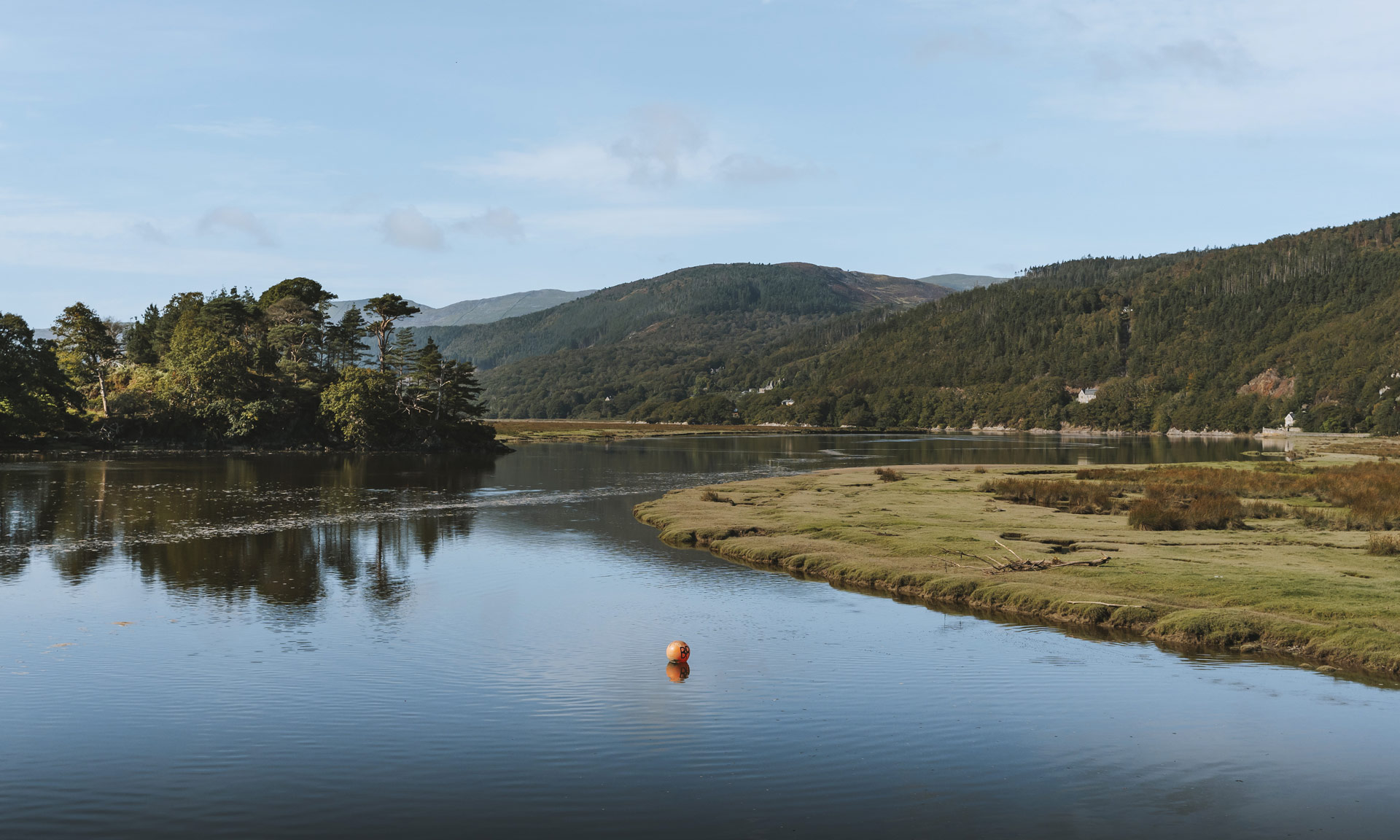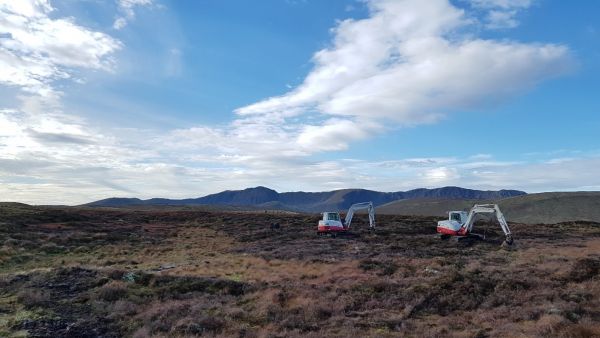A peatland restoration project at Bwlch y Groes on the edge of the Snowdonia National Park is the first of its kind in Wales to be completed with the benefit of carbon funding, following validation under the Peatland Code.
Thanks to funding by the Welsh Peatlands Sustainable Management Scheme, a project led by the Snowdonia National Park Authority, and in conjunction with the Roberts family who have farmed at Pennant Farm, Llanymawddwy for several generations, the 66 hectare peatland restoration project has been successfully completed.
Over the winter months restoration works to re-profile and block the extensive complexes of hags and gullies across the site were carried out by experienced peatland contractors. It is estimated that over the next 35 years, the restoration of the site will halt the loss of 2,335 tonnes of carbon emissions equivalent, which roughly equates to the amount of carbon dioxide generated from burning 632* household tanks worth of oil.
As well as halting the release of carbon from the peat and protecting its significant store of carbon, the restoration works will also have wide-spread co-benefits such as improved water quality, steadier water flow, increased biodiversity, and improved habitat conditions for freshwater invertebrates and birds. The surrounding area supports the most extensive tract of near-natural blanket bog in Wales and is the most important upland area for breeding birds, including a wide range of internationally important species.
The project was co-funded through the Welsh Peatlands Sustainable Management Scheme (SMS) project alongside carbon income generated from the sale of carbon credits through Forest Carbon. These carbon credits were validated under the Peatland Code, and in doing so enabled them to be marketed to the private sector.
DEYA Brewing, working in conjunction with Forest Carbon, have committed to acquire the 2,335 tonnes of carbon savings that the project is estimated to deliver over the next 35 years.
George Hepburne Scott, Director at Forest Carbon said:
“This is the third peatland restoration project in the UK, where Forest Carbon have helped utilise carbon funding alongside public grants to help finance their delivery. We believe there is huge scope to build on these projects and scale up rates of restoration over the coming years by more effectively blending the use of private and public funding”.
Rachel Harvey, Welsh Peatlands Project Manager at the Snowdonia National Park Authority said:
“This is only the third validated Peatland Code site in Wales, and the first to be co-funded with carbon finance and public funding. Bwlch y Groes is not only an excellent example of how the Peatland Code can facilitate long-term peatland restoration, but it’s also acting as a trailblazer for similar sites owned by single landowners or farming families. We hope the success at Bwlch y Groes will lead to many more of our Welsh peatlands adopting the Peatland Code for long-term restoration and management”.
Sion and Lisa Roberts of Pennant Farm, the landowners said:
“We are very pleased to be able to rear livestock for food production alongside enhancing habitats and increasing the carbon store at Bwlch y Groes. The process has been very straightforward from restoration works to selling the carbon credits, and we are looking forward to further potential projects in years to come”.
Theo Freyne, owner of DEYA Brewing, said:
“The investment that DEYA Brewing have made into the delivery of the Bwlch y Groes peatland restoration project is part of our wider efforts to mitigate the impacts of our residual emissions whilst we are making every effort to implement internal carbon reduction measures across our brewing operation’.
* Calculations based on Defra figures (2007) that 2.96kg of carbon dioxide is generated for every litre of oil burnet.
Notes to Editors
- This project has received funding through the Welsh Government Rural Communities – Rural Development Programme 2014-2020, which is funded by the European Agricultural Fund for Rural Development and the Welsh Government.
- Running along the eastern edge of Snowdonia National Park, the project area sits within the Berwyn and South Clwyd Mountains, which, at 2,209 ha, is one of the largest areas of upland heath in Europe. The Bwlch y Groes peatland restoration site is a blanket bog situated on a large saddle (bwlch) west of Llyn Efyrnwy nestled between the Aran Fawddwy and the Berwyn mountain ranges in south Snowdonia.
- The Bwlch y Groes project has been validated under the IUCN Peatland Code by the appointed certification body OF&G. It will continue to be monitored and verified under the Peatland Code every 10 years. The Code is voluntary certification standard for UK peatland projects wishing to market the climate benefits of peatland restoration and provides assurances to voluntary carbon market buyers that the climate benefits being sold are real, quantifiable, additional and permanent.
- The project site lies within a number of designated SAC’s, SPA and SSSI areas
- To arrange an interview or for more information on the project, please contact either:
George Hepburne Scott – georgehs@forestcarbon.co.uk or Gwen Aeron Edwards – Communications Officer for Planning and Land Management on 01766 772 238 or email gwen.aeron@eryri.llyw.cymru



